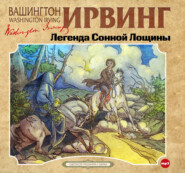По всем вопросам обращайтесь на: info@litportal.ru
(©) 2003-2025.
✖
Astoria; Or, Anecdotes of an Enterprise Beyond the Rocky Mountains
Настройки чтения
Размер шрифта
Высота строк
Поля
John Jacob Astor, the individual in question, was born in the honest little German village of Waldorf, near Heidelberg, on the banks of the Rhine. He was brought up in the simplicity of rural life, but, while yet a mere stripling, left his home, and launched himself amid the busy scenes of London, having had, from his very boyhood, a singular presentiment that he would ultimately arrive at great fortune.
At the close of the American Revolution he was still in London, and scarce on the threshold of active life. An elder brother had been for some few years resident in the United States, and Mr. Astor determined to follow him, and to seek his fortunes in the rising country. Investing a small sum which he had amassed since leaving his native village, in merchandise suited to the American market, he embarked, in the month of November, 1783, in a ship bound to Baltimore, and arrived in Hampton Roads in the month of January. The winter was extremely severe, and the ship, with many others, was detained by the ice in and about Chesapeake Bay for nearly three months.
During this period, the passengers of the various ships used occasionally to go on shore, and mingle sociably together. In this way Mr. Astor became acquainted with a countryman of his, a furrier by trade. Having had a previous impression that this might be a lucrative trade in the New World, he made many inquiries of his new acquaintance on the subject, who cheerfully gave him all the information in his power as to the quality and value of different furs, and the mode of carrying on the traffic. He subsequently accompanied him to New York, and, by his advice, Mr. Astor was induced to invest the proceeds of his merchandise in furs. With these he sailed from New York to London in 1784, disposed of them advantageously, made himself further acquainted with the course of the trade, and returned the same year to New York, with a view to settle in the United States.
He now devoted himself to the branch of commerce with which he had thus casually been made acquainted. He began his career, of course, on the narrowest scale; but he brought to the task a persevering industry, rigid economy, and strict integrity. To these were added an aspiring spirit that always looked upwards; a genius bold, fertile, and expansive; a sagacity quick to grasp and convert every circumstance to its advantage, and a singular and never wavering confidence of signal success.
As yet, trade in peltries was not organized in the United States, and could not be said to form a regular line of business. Furs and skins were casually collected by the country traders in their dealings with the Indians or the white hunters, but the main supply was derived from Canada. As Mr. Astor’s means increased, he made annual visits to Montreal, where he purchased furs from the houses at that place engaged in the trade. These he shipped from Canada to London, no direct trade being allowed from that colony to any but the mother country.
In 1794 or ‘95, a treaty with Great Britain removed the restrictions imposed upon the trade with the colonies, and opened a direct commercial intercourse between Canada and the United States. Mr. Astor was in London at the time, and immediately made a contract with the agents of the Northwest Company for furs. He was now enabled to import them from Montreal into the United States for the home supply, and to be shipped thence to different parts of Europe, as well as to China, which has ever been the best market for the richest and finest kinds of peltry.
The treaty in question provided, likewise, that the military posts occupied by the British within the territorial limits of the United States, should be surrendered. Accordingly, Oswego, Niagara, Detroit, Michilimackinac, and other posts on the American side of the lakes, were given up. An opening was thus made for the American merchant to trade on the confines of Canada, and within the territories of the United States. After an interval of some years, about 1807, Mr. Astor embarked in this trade on his own account. His capital and resources had by this time greatly augmented, and he had risen from small beginnings to take his place among the first merchants and financiers of the country. His genius had ever been in advance of his circumstances, prompting him to new and wide fields of enterprise beyond the scope of ordinary merchants. With all his enterprise and resources however, he soon found the power and influence of the Michilimackinac (or Mackinaw) Company too great for him, having engrossed most of the trade within the American borders.
A plan had to be devised to enable him to enter into successful competition. He was aware of the wish of the American government, already stated, that the fur trade within its boundaries should be in the hands of American citizens, and of the ineffectual measures it had taken to accomplish that object. He now offered, if aided and protected by government, to turn the whole of that trade into American channels. He was invited to unfold his plans to government, and they were warmly approved, though the executive could give no direct aid.
Thus countenanced, however, he obtained, in 1809, a charter from the legislature of the State of New York, incorporating a company under the name of “The American Fur Company,” with a capital of one million of dollars, with the privilege of increasing it to two millions. The capital was furnished by himself he, in fact, constituted the company; for, though he had a board of directors, they were merely nominal; the whole business was conducted on his plans and with his resources, but he preferred to do so under the imposing and formidable aspect of a corporation, rather than in his individual name, and his policy was sagacious and effective.
As the Mackinaw Company still continued its rivalry, and as the fur trade would not advantageously admit of competition, he made a new arrangement in 1811, by which, in conjunction with certain partners of the Northwest Company, and other persons engaged in the fur trade, he bought out the Mackinaw Company, and merged that and the American Fur Company into a new association, to be called the “Southwest Company.” This he likewise did with the privity and approbation of the American government.
By this arrangement Mr. Astor became proprietor of one half of the Indian establishments and goods which the Mackinaw Company had within the territory of the Indian country in the United States, and it was understood that the whole was to be surrendered into his hands at the expiration of five years, on condition that the American Company would not trade within the British dominions.
Unluckily, the war which broke out in 1812 between Great Britain and the United States suspended the association; and, after the war, it was entirely dissolved; Congress having passed a law prohibiting the British fur traders from prosecuting their enterprises within the territories of the United States.
CHAPTER III
Fur Trade in the Pacific – American Coasting Voyages – Russian Enterprises. – Discovery of the Columbia River. – Carver’s Project to Found a Settlement There. – Mackenzie’s Expedition. – Lewis and Clarke’s Journey Across the Rocky Mountains – Mr. Astor’s Grand Commercial Scheme. – His Correspondence on the Subject With Mr. Jefferson. – His Negotiations With the Northwest Company. – His Steps to Carry His Scheme Into Effect.
WHILE the various companies we have noticed were pushing their enterprises far and wide in the wilds of Canada, and along the course of the great western waters, other adventurers, intent on the same objects, were traversing the watery wastes of the Pacific and skirting the northwest coast of America. The last voyage of that renowned but unfortunate discoverer, Captain Cook, had made known the vast quantities of the sea-otter to be found along that coast, and the immense prices to be obtained for its fur in China. It was as if a new gold coast had been discovered. Individuals from various countries dashed into this lucrative traffic, so that in the year 1792, there were twenty-one vessels under different flags, plying along the coast and trading with the natives. The greater part of them were American, and owned by Boston merchants. They generally remained on the coast and about the adjacent seas, for two years, carrying on as wandering and adventurous a commerce on the water as did the traders and trappers on land. Their trade extended along the whole coast from California to the high northern latitudes. They would run in near shore, anchor, and wait for the natives to come off in their canoes with peltries. The trade exhausted at one place, they would up anchor and off to another. In this way they would consume the summer, and when autumn came on, would run down to the Sandwich Islands and winter in some friendly and plentiful harbor. In the following year they would resume their summer trade, commencing at California and proceeding north: and, having in the course of the two seasons collected a sufficient cargo of peltries, would make the best of their way to China. Here they would sell their furs, take in teas, nankeens, and other merchandise, and return to Boston, after an absence of two or three years.
The people, however, who entered most extensively and effectively in the fur trade of the Pacific, were the Russians. Instead of making casual voyages, in transient ships, they established regular trading houses in the high latitudes, along the northwest coast of America, and upon the chain of the Aleutian Islands between Kamtschatka and the promontory of Alaska.
To promote and protect these enterprises, a company was incorporated by the Russian government with exclusive privileges, and a capital of two hundred and sixty thousand pounds sterling; and the sovereignty of that part of the American continent, along the coast of which the posts had been established, was claimed by the Russian crown, on the plea that the land had been discovered and occupied by its subjects.
As China was the grand mart for the furs collected in these quarters, the Russians had the advantage over their competitors in the trade. The latter had to take their peltries to Canton, which, however, was a mere receiving mart, from whence they had to be distributed over the interior of the empire and sent to the northern parts, where there was the chief consumption. The Russians, on the contrary, carried their furs, by a shorter voyage, directly to the northern parts of the Chinese empire; thus being able to afford them in the market without the additional cost of internal transportation.
We come now to the immediate field of operation of the great enterprise we have undertaken to illustrate.
Among the American ships which traded along the northwest coast in 1792, was the Columbia, Captain Gray, of Boston. In the course of her voyage she discovered the mouth of a large river in lat. 46 19’ north. Entering it with some difficulty, on account of sand-bars and breakers, she came to anchor in a spacious bay. A boat was well manned, and sent on shore to a village on the beach, but all the inhabitants fled excepting the aged and infirm. The kind manner in which these were treated, and the presents given them, gradually lured back the others, and a friendly intercourse took place. They had never seen a ship or a white man. When they had first descried the Columbia, they had supposed it a floating island; then some monster of the deep; but when they saw the boat putting for shore with human beings on board, they considered them cannibals sent by the Great Spirit to ravage the country and devour the inhabitants. Captain Gray did not ascend the river farther than the bay in question, which continues to bear his name. After putting to sea, he fell in with the celebrated discoverer, Vancouver, and informed him of his discovery, furnished him with a chart which he had made of the river. Vancouver visited the river, and his lieutenant, Broughton, explored it by the aid of Captain Gray’s chart; ascending it upwards of one hundred miles, until within view of a snowy mountain, to which he gave the name of Mt. Hood, which it still retains.
The existence of this river, however, was known long before the visits of Gray and Vancouver, but the information concerning it was vague and indefinite, being gathered from the reports of Indians. It was spoken of by travellers as the Oregon, and as the Great River of the West. A Spanish ship is said to have been wrecked at the mouth, several of the crew of which lived for some time among the natives. The Columbia, however, is believed to be the first ship that made a regular discovery and anchored within its waters, and it has since generally borne the name of that vessel. As early as 1763, shortly after the acquisition of the Canadas by Great Britain, Captain Jonathan Carver, who had been in the British provincial army, projected a journey across the continent between the forty-third and forty-sixth degrees of northern latitude to the shores of the Pacific Ocean. His objects were to ascertain the breadth of the continent at its broadest part, and to determine on some place on the shores of the Pacific, where government might establish a post to facilitate the discovery of a northwest passage, or a communication between Hudson’s Bay and the Pacific Ocean. This place he presumed would be somewhere about the Straits of Annian, at which point he supposed the Oregon disembogued itself. It was his opinion, also, that a settlement on this extremity of America would disclose new sources of trade, promote many useful discoveries, and open a more direct communication with China and the English settlements in the East Indies, than that by the Cape of Good Hope or the Straits of Magellan.[1 - Carver’s Travels, Introd. b. iii. Philad. 1796.] This enterprising and intrepid traveller was twice baffled in individual efforts to accomplish this great journey. In 1774, he was joined in the scheme by Richard Whitworth, a member of Parliament, and a man of wealth. Their enterprise was projected on a broad and bold plan. They were to take with them fifty or sixty men, artificers and mariners. With these they were to make their way up one of the branches of the Missouri, explore the mountains for the source of the Oregon, or River of the West, and sail down that river to its supposed exit, near the Straits of Annian. Here they were to erect a fort, and build the vessels necessary to carry their discoveries by sea into effect. Their plan had the sanction of the British government, and grants and other requisites were nearly completed, when the breaking out of the American Revolution once more defeated the undertaking.[2 - Carver’s Travels, p. 360.]
The expedition of Sir Alexander Mackenzie in 1793, across the continent to the Pacific Ocean, which he reached in lat. 52 20’ 48”, again suggested the possibility of linking together the trade of both sides of the continent. In lat. 52 30’ he had descended a river for some distance which flowed towards the south, and wag called by the natives Tacoutche Tesse, and which he erroneously supposed to be the Columbia. It was afterwards ascertained that it emptied itself in lat. 49 degrees, whereas the mouth of the Columbia is about three degrees further south.
When Mackenzie some years subsequently published an account of his expeditions, he suggested the policy of opening an intercourse between the Atlantic and Pacific oceans, and forming regular establishments through the interior and at both extremes, as well as along the coasts and islands. By this means, he observed, the entire command of the fur trade of North America might be obtained from lat. 48 north to the pole, excepting that portion held by the Russians, for as to the American adventurers who had hitherto enjoyed the traffic along the northwest coast, they would instantly disappear, he added, before a well regulated trade.
A scheme of this kind, however, was too vast and hazardous for individual enterprise; it could only be undertaken by a company under the sanction and protection of a government; and as there might be a clashing of claims between the Hudson’s Bay and Northwest Company, the one holding by right of charter, the other by right of possession, he proposed that the two comparties should coalesce in this great undertaking. The long-cherished jealousies of these two companies, however, were too deep and strong to allow them to listen to such counsel.
In the meantime the attention of the American government was attracted to the subject, and the memorable expedition under Messrs. Lewis and Clarke fitted out. These gentlemen, in 1804, accomplished the enterprise which had been projected by Carver and Whitworth in 1774. They ascended the Missouri, passed through the stupendous gates of the Rocky Mountains, hitherto unknown to white men; discovered and explored the upper waters of the Columbia, and followed that river down to its mouth, where their countryman, Gray, had anchored about twelve years previously. Here they passed the winter, and returned across the mountains in the following spring. The reports published by them of their expedition demonstrated the practicability of establishing a line of communication across the continent, from the Atlantic to the Pacific Ocean.
It was then that the idea presented itself to the mind of Mr. Astor, of grasping with his individual hand this great enterprise, which for years had been dubiously yet desirously contemplated by powerful associations and maternal governments. For some time he revolved the idea in his mind, gradually extending and maturing his plans as his means of executing them augmented. The main feature of his scheme was to establish a line of trading posts along the Missouri and the Columbia, to the mouth of the latter, where was to be founded the chief trading house or mart. Inferior posts would be established in the interior, and on all the tributary streams of the Columbia, to trade with the Indians; these posts would draw their supplies from the main establishment, and bring to it the peltries they collected. Coasting craft would be built and fitted out, also at the mouth of the Columbia, to trade, at favorable seasons, all along the northwest coast, and return, with the proceeds of their voyages, to this place of deposit. Thus all the Indian trade, both of the interior and the coast, would converge to this point, and thence derive its sustenance.
A ship was to be sent annually from New York to this main establishment with reinforcements and supplies, and with merchandise suited to the trade. It would take on board the furs collected during the preceding year, carry them to Canton, invest the proceeds in the rich merchandise of China, and return thus freighted to New York. As, in extending the American trade along the coast to the northward, it might be brought into the vicinity of the Russian Fur Company, and produce a hostile rivalry, it was part of the plan of Mr. Astor to conciliate the good-will of that company by the most amicable and beneficial arrangements. The Russian establishment was chiefly dependent for its supplies upon transient trading vessels from the United States. These vessels, however, were often of more harm than advantage. Being owned by private adventurers, or casual voyagers, who cared only for present profit, and had no interest in the permanent prosperity of the trade, they were reckless in their dealings with the natives, and made no scruple of supplying them with fire-arms. In this way several fierce tribes in the vicinity of the Russian posts, or within the range of their trading excursions, were furnished with deadly means of warfare, and rendered troublesome and dangerous neighbors.
The Russian government had made representations to that of the United States of these malpractices on the part of its citizens, and urged to have this traffic in arms prohibited; but, as it did not infringe any municipal law, our government could not interfere. Yet, still it regarded, with solicitude, a traffic which, if persisted in, might give offence to Russia, at that time almost the only friendly power to us. In this dilemma the government had applied to Mr. Astor, as one conversant in this branch of trade, for information that might point out a way to remedy the evil. This circumstance had suggested to him the idea of supplying the Russian establishment regularly by means of the annual ship that should visit the settlement at the mouth of the Columbia (or Oregon); by this means the casual trading vessels would be excluded from those parts of the coast where their malpractices were so injurious to the Russians.
Such is a brief outline of the enterprise projected by Mr. Astor, but which continually expanded in his mind. Indeed it is due to him to say that he was not actuated by mere motives of individual profit. He was already wealthy beyond the ordinary desires of man, but he now aspired to that honorable fame which is awarded to men of similar scope of mind, who by their great commercial enterprises have enriched nations, peopled wildernesses, and extended the bounds of empire. He considered his projected establishment at the mouth of the Columbia as the emporium to an immense commerce; as a colony that would form the germ of a wide civilization; that would, in fact, carry the American population across the Rocky Mountains and spread it along the shores of the Pacific, as it already animated the shores of the Atlantic. As Mr. Astor, by the magnitude of his commercial and financial relations, and the vigor and scope of his self-taught mind, had elevated himself into the consideration of government and the communion and correspondence with leading statesmen, he, at an early period, communicated his schemes to President Jefferson, soliciting the countenance of government. How highly they were esteemed by that eminent man, we may judge by the following passage, written by him some time afterwards.
[3 - On this point Mr. Jefferson’s memory was in error. The proposition alluded to was the one, already mentioned, for the establishment of an American Fur Company in the Atlantic States. The great enterprise beyond the mountains, that was to sweep the shores of the Pacific, originated in the mind of Mr. Astor, and was proposed by him to the government.]I remember well having invited your proposition on this subject,*** and encouraged it with the assurance of every facility and protection which the government could properly afford. I considered, as a great public acquisition, the commencement of a settlement on that point of the western coast of America, and looked forward with gratification to the time when its descendants should have spread themselves through the whole length of that coast, covering it with free and independent Americans, unconnected with us but by the ties of blood and interest, and enjoying like us the rights of self-government.”
The cabinet joined with Mr. Jefferson in warm approbation of the plan, and held out assurance of every protection that could, consistently with general policy, be afforded. Mr. Astor now prepared to carry his scheme into prompt execution. He had some competition, however, to apprehend and guard against. The Northwest Company, acting feebly and partially upon the suggestions of its former agent, Sir Alexander Mackenzie, had pushed one or two advanced trading posts across the Rocky Mountains, into a tract of country visited by that enterprising traveller, and since named New Caledonia. This tract lay about two degrees north of the Columbia, and intervened between the territories of the United States and those of Russia. Its length was about five hundred and fifty miles, and its breadth, from the mountains to the Pacific, from three hundred to three hundred and fifty geographic miles.
Should the Northwest Company persist in extending their trade in that quarter, their competition might be of serious detriment to the plans of Mr. Astor. It is true they would contend with him to a vast disadvantage, from the checks and restrictions to which they were subjected. They were straitened on one side by the rivalry of the Hudson’s Bay Company; then they had no good post on the Pacific where they could receive supplies by sea for their establishments beyond the mountains; nor, if they had one, could they ship their furs thence to China, that great mart for peltries; the Chinese trade being comprised in the monopoly of the East India Company. Their posts beyond the mountains had to be supplied in yearly expeditions, like caravans, from Montreal, and the furs conveyed back in the same way, by long, precarious, and expensive routes, across the continent. Mr. Astor, on the contrary, would be able to supply his proposed establishment at the mouth of the Columbia by sea, and to ship the furs collected there directly to China, so as to undersell the Northwest Company in the great Chinese market.
Still, the competition of two rival companies west of the Rocky Mountains could not but prove detrimental to both, and fraught with those evils, both to the trade and to the Indians, that had attended similar rivalries in the Canadas. To prevent any contest of the kind, therefore, he made known his plan to the agents of the Northwest Company, and proposed to interest them, to the extent of one third, in the trade thus to be opened. Some correspondence and negotiation ensued. The company were aware of the advantages which would be possessed by Mr. Astor should he be able to carry his scheme into effect; but they anticipated a monopoly of the trade beyond the mountains by their establishments in New Caledonia, and were loth to share it with an individual who had already proved a formidable competitor in the Atlantic trade. They hoped, too, by a timely move, to secure the mouth of the Columbia before Mr. Astor would be able to put his plans into operation; and, that key to the internal trade once in their possession, the whole country would be at their command. After some negotiation and delay, therefore, they declined the proposition that had been made to them, but subsequently despatched a party for the mouth of the Columbia, to establish a post there before any expedition sent out by Mr. Astor might arrive.
In the meantime Mr. Astor, finding his overtures rejected, proceeded fearlessly to execute his enterprise in face of the whole power of the Northwest Company. His main establishment once planted at the mouth of the Columbia, he looked with confidence to ultimate success. Being able to reinforce and supply it amply by sea, he would push his interior posts in every direction up the rivers and along the coast; supplying the natives at a lower rate, and thus gradually obliging the Northwest Company to give up the competition, relinquish New Caledonia, and retire to the other side of the mountains. He would then have possession of the trade, not merely of the Columbia and its tributaries, but of the regions farther north, quite to the Russian possessions. Such was a part of his brilliant and comprehensive plan.
He now proceeded, with all diligence, to procure proper agents and coadjutors, habituated to the Indian trade and to the life of the wilderness. Among the clerks of the Northwest Company were several of great capacity and experience, who had served out their probationary terms, but who, either through lack of interest and influence, or a want of vacancies, had not been promoted. They were consequently much dissatisfied, and ready for any employment in which their talents and acquirements might be turned to better account.
Mr. Astor made his overtures to several of these persons, and three of them entered into his views. One of these, Mr. Alexander M’Kay, had accompanied Sir Alexander Mackenzie in both of his expeditions to the northwest coast of America in 1789 and 1793. The other two were Duncan M’Dougal and Donald M’Kenzie. To these were subsequently added Mr. Wilson Price Hunt, of New Jersey. As this gentleman was a native born citizen of the United States, a person of great probity and worth, he was selected by Mr. Astor to be his chief agent, and to represent him in the contemplated establishment.
On the 23d of June, 1810, articles of agreement were entered into between Mr. Astor and those four gentlemen, acting for themselves and for the several persons who had already agreed to become, or should thereafter become, associated under the firm of “The Pacific Fur Company.”
According to these articles, Mr. Astor was to be at the head of the company, and to manage its affairs in New York. He was to furnish vessels, goods, provisions, arms, ammunition, and all other requisites for the enterprise at first cost and charges, provided that they did not, at any time, involve an advance of more than four hundred thousand dollars.
The stock of the company was to be divided into a hundred equal shares, with the profits accruing thereon. Fifty shares were to be at the disposition of Mr. Astor, and the other fifty to be divided among the partners and their associates.
Mr. Astor was to have the privilege of introducing other persons into the connection as partners, two of whom, at least, should be conversant with the Indian trade, and none of them entitled to more than three shares.
A general meeting of the company was to be held annually at Columbia River, for the investigation and regulation of its affairs; at which absent members might be represented, and might vote by proxy under certain specified conditions.
The association, if successful, was to continue for twenty years; but the parties had full power to abandon and dissolve it within the first five years, should it be found unprofitable. For this term Mr. Astor covenanted to bear all the loss that might be incurred; after which it was to be borne by all the partners, in proportion to their respective shares.
The parties of the second part were to execute faithfully such duties as might be assigned to them by a majority of the company on the northwest coast, and to repair to such place or places as the majority might direct.
An agent, appointed for the term of five years, was to reside at the principal establishment on the northwest coast, and Wilson Price Hunt was the one chosen for the first term. Should the interests of the concern at any time require his absence, a person was to be appointed, in general meeting, to take his place.
Such were the leading conditions of this association; we shall now proceed to relate the various hardy and eventful expeditions, by sea and land, to which it gave rise.
CHAPTER IV
Two Expeditions Set on Foot. – The Tonquin and Her Crew. – Captain Thorn, His Character. – The Partners and Clerks – Canadian Voyageurs, Their Habits, Employments, Dress, Character, Songs – Expedition of a Canadian Boat and Its Crew by Land and Water. – Arrival at New York. – Preparations for a Sea Voyage. – Northwest Braggarts. – Underhand Precautions – Letter of Instructions.
IN prosecuting his great scheme of commerce and colonization, two expeditions were devised by Mr. Astor, one by sea, the other by land. The former was to carry out the people, stores, ammunition, and merchandise, requisite for establishing a fortified trading post at the mouth of Columbia River. The latter, conducted by Mr. Hunt, was to proceed up the Missouri, and across the Rocky Mountains, to the same point; exploring a line of communication across the continent and noting the places where interior trading posts might be established. The expedition by sea is the one which comes first under consideration.
A fine ship was provided called the Tonquin, of two hundred and ninety tons burden, mounting ten guns, with a crew of twenty men. She carried an assortment of merchandise for trading with the natives of the seaboard and of the interior, together with the frame of a schooner, to be employed in the coasting trade. Seeds also were provided for the cultivation of the soil, and nothing was neglected for the necessary supply of the establishment. The command of the ship was intrusted to Jonathan Thorn, of New York, a lieutenant in the United States navy, on leave of absence. He was a man of courage and firmness, who had distinguished himself in our Tripolitan war, and, from being accustomed to naval discipline, was considered by Mr. Astor as well fitted to take charge of an expedition of the kind. Four of the partners were to embark in the ship, namely, Messrs. M’Kay, M’Dougal, David Stuart, and his nephew, Robert Stuart. Mr. M’Dougal was empowered by Mr. Astor to act as his proxy in the absence of Mr. Hunt, to vote for him and in his name, on any question that might come before any meeting of the persons interested in the voyage.
Besides the partners, there were twelve clerks to go out in the ship, several of them natives of Canada, who had some experience in the Indian trade. They were bound to the service of the company for five years, at the rate of one hundred dollars a year, payable at the expiration of the term, and an annual equipment of clothing to the amount of forty dollars. In case of ill conduct they were liable to forfeit their wages and be dismissed; but, should they acquit themselves well, the confident expectation was held out to them of promotion, and partnership. Their interests were thus, to some extent, identified with those of the company.

















